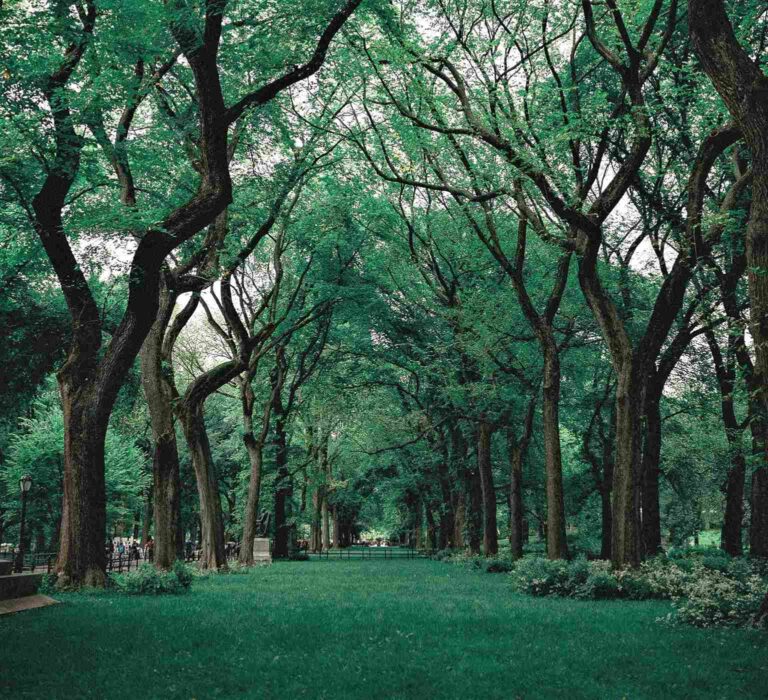In cities, heat and mugginess are increasingly rising due to the presence of asphalt and buildings. Instead of installing air conditioners – which make the situation worse – we should plant more trees.
Among the many benefits offered by trees is that of creating cool shade in which to take refuge during hot summer days. The presence of trees in the city can lower the temperature by as much as 3 degrees.
Table of Contents
Trees lower city temperatures by up as 3 degrees
In urban areas, the man-made materials from which buildings and roads are constructed absorb and release heat, contributing to rising temperatures. In addition, the presence of houses and buildings, decreases the intensity of wind in cities, further increasing the temperature.
As the height of buildings and the amount of asphalt increase, the so-called “canyon effect” grows. The sun’s energy is trapped in these urban canyons and given away in the form of heat, worsening the quality of life for citizens.
By planting trees in cities, it is possible to moderate the canyon effect caused by land cover and the presence of buildings. The presence of trees in cities can go as far as decreasing the temperature by 2-3 degrees.
Trees are able to use much of the sun’s energy for transpiration and photosynthesis. Thus lowering air temperatures and providing significantly more comfortable shade.
This is possible because the radiant energy that comes from the sun’s rays is partly absorbed and partly diverted by the leaves and branches of trees. In addition, plant foliage is able to influence wind speed and direction without blocking the passage of air.
Urban parks and greenery is fundamental to mitigate climate change
Let’s also not forget that plants transpire, absorbing water from their roots, which partly returns to the atmosphere in the form of water vapor through their leaves. This process also helps to remove heat from the environment and makes tree shade cooler than artificial shade.
Depending on the size of the tree and the quantity and compactness of the foliage, its ability to cool the air varies. The larger the tree and the denser the leaves, the greater the cooling effect.
Some trees suit better to produce shade in urban areas, just in relation to the density of foliage and the size of the canopy. Examples of species that are most efficient at providing shade and protecting us from summer heat in the city include linden, oak, maple, ash, and sycamore.
Green roofs and vertical gardens can also improve environmental conditions in the city. These solutions also contribute to lowering temperatures inside buildings.
According to experts, a building surrounded by trees uses 2.3 to 90 percent less energy for cooling, mainly through shading effects. And 1 to 20 percent less heating energy through windbreak effects, than buildings without trees.
Not just shade: the benefits of trees
In addition to creating cool shade, trees improve the quality of the air we breathe. Through their leaves in fact, trees, shrubs and turf, filter the air by removing dust and other particles.
In particular, leaves absorb carbon dioxide from greenhouse gases and other air pollutants such as ozone, carbon monoxide and sulfur dioxide-and release oxygen.
The presence of trees and green areas in the city also has a calming effect on our bodies. And can significantly reduce stress given by the pace of work and traffic.
In addition to being about 3°C cooler than the streets, city parks also provide opportunities for socializing, benefiting the community. Also, buildings surrounded by green areas seem to have lower crime rates than buildings without trees nearby.
Unfortunately, maintaining greenery requires economic investments that governments and individuals do not always want to deal with. Indeed, trees must be maintained, pruned, fertilized, and these operations obviously have costs.
Read also: When is a city considered smart? These are the main features of the cities of the future












